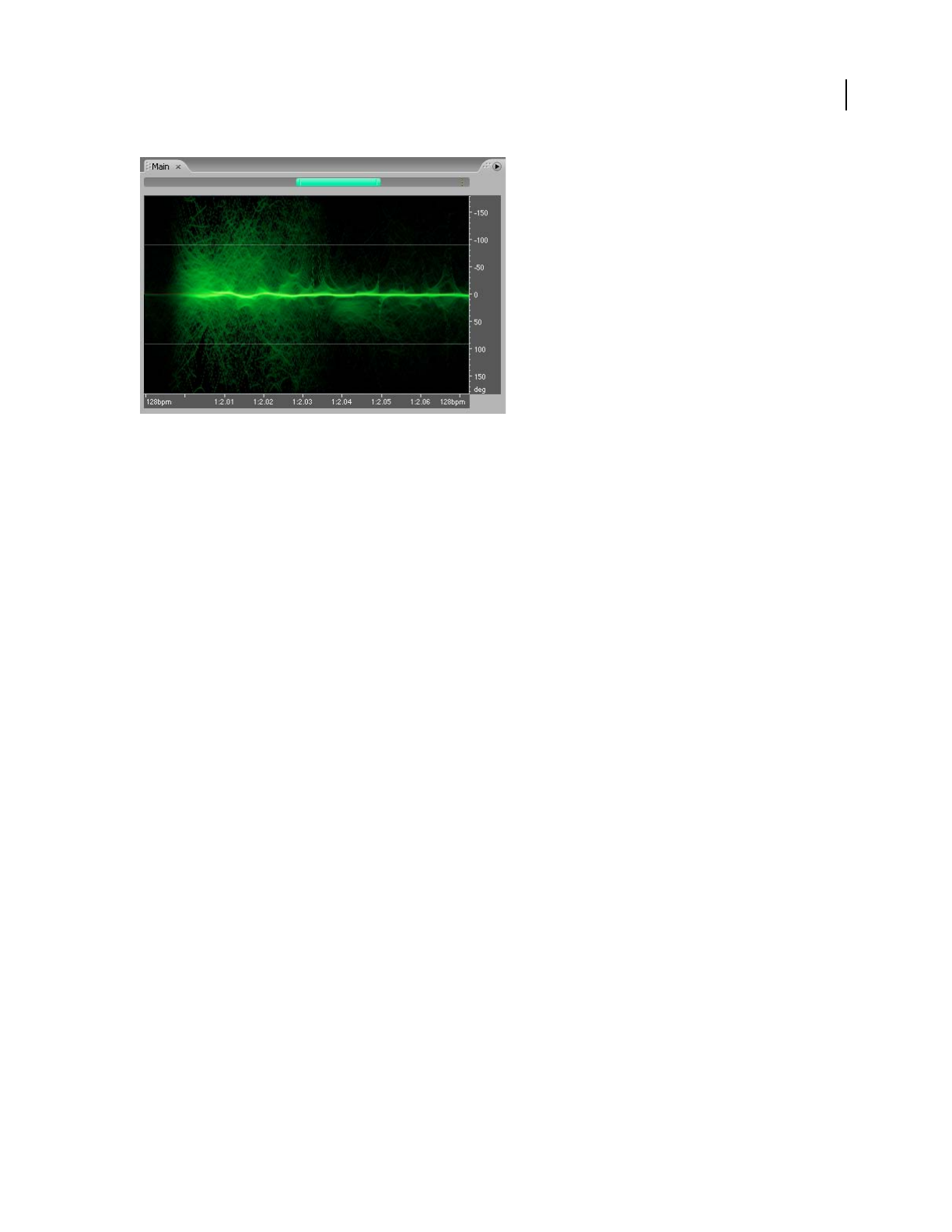Operation Manual
Table Of Contents
- Contents
- Chapter 1: Getting started
- Chapter 2: Digital audio fundamentals
- Chapter 3: Workflow and workspace
- Chapter 4: Setting up Adobe Audition
- Chapter 5: Importing, recording, and playing audio
- Chapter 6: Editing audio files
- Displaying audio in Edit View
- Selecting audio
- Copying, cutting, pasting, and deleting audio
- Visually fading and changing amplitude
- Working with markers
- Creating and deleting silence
- Inverting and reversing audio
- Generating audio
- Analyzing phase, frequency, and amplitude
- Converting sample types
- Recovery and undo
- Chapter 7: Applying effects
- Chapter 8: Effects reference
- Amplitude and compression effects
- Delay and echo effects
- Filter and equalizer effects
- Modulation effects
- Restoration effects
- Reverb effects
- Special effects
- Stereo imagery effects
- Changing stereo imagery
- Binaural Auto-Panner effect (Edit View only)
- Center Channel Extractor effect
- Channel Mixer effect
- Doppler Shifter effect (Edit View only)
- Graphic Panner effect
- Pan/Expand effect (Edit View only)
- Stereo Expander effect
- Stereo Field Rotate VST effect
- Stereo Field Rotate process effect (Edit View only)
- Time and pitch manipulation effects
- Multitrack effects
- Chapter 9: Mixing multitrack sessions
- Chapter 10: Composing with MIDI
- Chapter 11: Loops
- Chapter 12: Working with video
- Chapter 13: Creating surround sound
- Chapter 14: Saving and exporting
- Saving and exporting files
- Audio file formats
- About audio file formats
- 64-bit doubles (RAW) (.dbl)
- 8-bit signed (.sam)
- A/mu-Law Wave (.wav)
- ACM Waveform (.wav)
- Amiga IFF-8SVX (.iff, .svx)
- Apple AIFF (.aif, .snd)
- ASCII Text Data (.txt)
- Audition Loop (.cel)
- Creative Sound Blaster (.voc)
- Dialogic ADPCM (.vox)
- DiamondWare Digitized (.dwd)
- DVI/IMA ADPCM (.wav)
- Microsoft ADPCM (.wav)
- mp3PRO (.mp3)
- NeXT/Sun (.au, .snd)
- Ogg Vorbis (.ogg)
- SampleVision (.smp)
- Spectral Bitmap Image (.bmp)
- Windows Media Audio (.wma)
- Windows PCM (.wav, .bwf)
- PCM Raw Data (.pcm, .raw)
- Video file formats
- Adding file information
- Chapter 15: Automating tasks
- Chapter 16: Building audio CDs
- Chapter 17: Keyboard shortcuts
- Chapter 18: Digital audio glossary
- Index

ADOBE AUDITION 3.0
User Guide
68
Spectral Phase Display, with audio moving from out-of-phase (at top and bottom) to in-phase (at center)
For maximum precision, use Spectral Phase Display in conjunction with the Phase Analysis panel. (See “Analyze
phase” on page 91.) For example, if you see a lot of inverse phase information in the Phase Analysis panel, you can
use Spectral Phase Display to find out exactly where in time the out-of-phase audio is occurring.
To correct a phase problem, you can use the Effects > Invert command to inverse phase by 180˚ or the Center
Channel Extractor to extract audio with a certain phase relationship. For more information, see “Invert a waveform”
on page 87 and “Center Channel Extractor effect” on page 163.
See also
“Adjusting spectral displays” on page 68
“Techniques for restoring audio” on page 141
Adjusting spectral displays
The Spectral Controls panel (Window > Spectral Controls) gives you precise control over how data is displayed in
Spectral Frequency Display, Spectral Pan Display, and Spectral Phase Display. By changing the color and display
settings, you can enhance different types of detail and better isolate artifacts.
The Spectral Controls panel lets you modify your display settings dynamically, so you can see your changes immedi-
ately in any of the spectral views. You can use one of the display presets or fine-tune the settings to your own speci-
fications. Customized settings can be saved as presets.
In the Spectral Controls panel, colors on the left side of the color spectrum represent low amplitudes, and those on
the right side represent high amplitudes. Color points let you precisely adjust the color range. You can also adjust the
color saturation and gamma.










